Because of the 3-year-long drought in Kenya, we paused our Livestock and a Business (LAB) program last year. However, since parts of Kajiado County received rain earlier this year and more rains are expected, we’ve restarted training three new groups of livestock farmers this summer and fall. This will highlight three recent LAB sessions and their impacts.
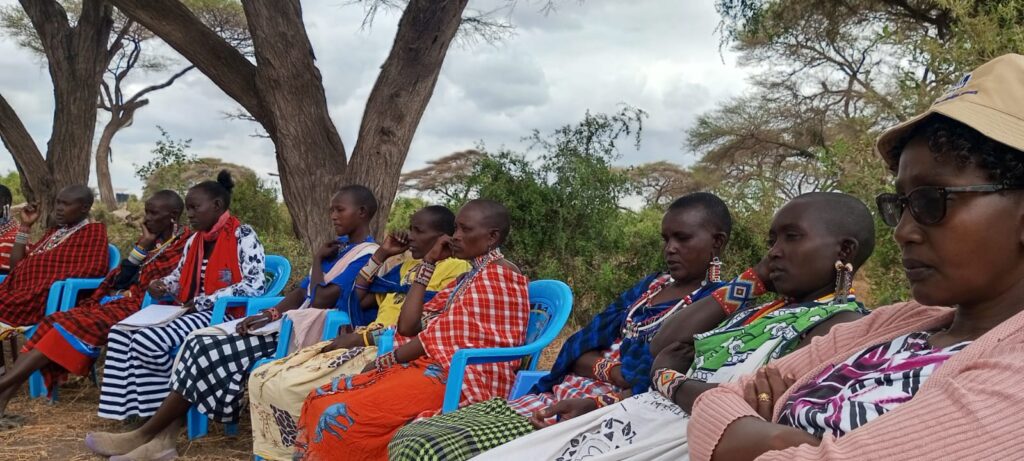
Training Highlight 1: Leadership & Ground Dynamics
The new LAB groups this year are from Kitirua, Esiteti, and Kelunyet. We train groups rather than individuals because by working together as a team they are more likely to be successful. Some of our first training sessions this summer taught participants about group dynamics and leadership roles. As you may remember from your time in school, perhaps the best way to learn–and remember–key lessons is through interactive demonstrations.
One example of a training activity is moving a full glass of water on a blanket as a group. Each person holds a corner of the blanket with the glass in the middle, then they have to move. The goal is to keep the glass upright, symbolically showing how members of the group need to work together—or else the water falls over.
We also teach using examples that Maasai are familiar with. This way, they can more easily connect the lessons with their businesses. In one training session, we use animal metaphors to identify group member personalities to decide what job each person should have, and which personalities to be cautious about. For example, someone who has the traits of a giraffe—with a vision for the future—would be a good leader. On the other hand, someone with the traits of a snake—quietly scheming for his or her own gain—needs to be watched closely.
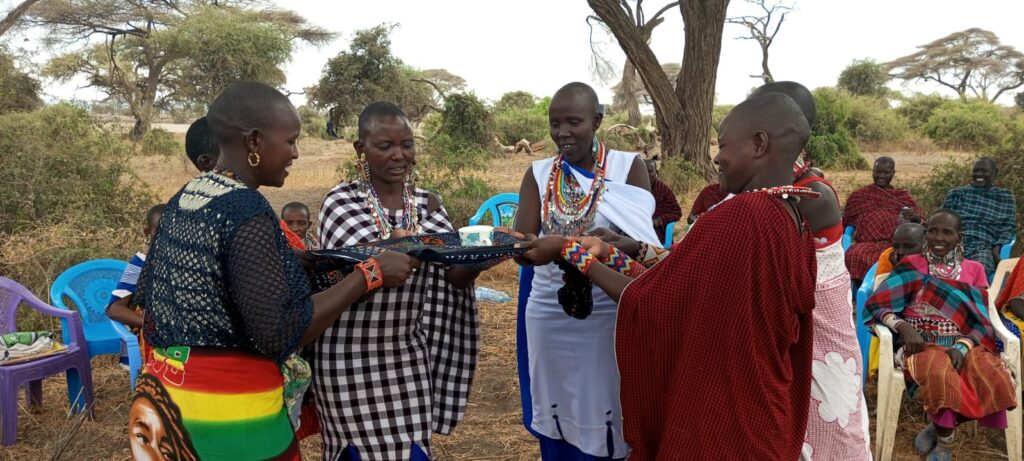
Training Highlight 2: Livestock Disease Practical
Another key element of our LAB trainings is to identify previous business problems so that they can be corrected. Some participants have kept livestock before, while others are looking forward to owning their first animals. Either way, Maasai herders tend to manage livestock like their neighbors, even if those neighbors are practicing bad business techniques.
Our program teaches groups best-practice livestock management, disease prevention, control, and drought resilience. We instruct these farmers on livestock market surveys, timely buying and selling, budgeting and record-keeping, and grass conservation and management, all of which help increase profit margins. The goal of LAB is to help people have healthier herds, and more stable incomes, for the long run.
Recently, our new groups came together for the first time to participate in their Livestock Disease Practical. Participants learned valuable lessons as local veterinarians demonstrated how to care for, treat, and prevent illness in their livestock. Some members have used medicine before, but scarcely and often in ways not based in evidence.
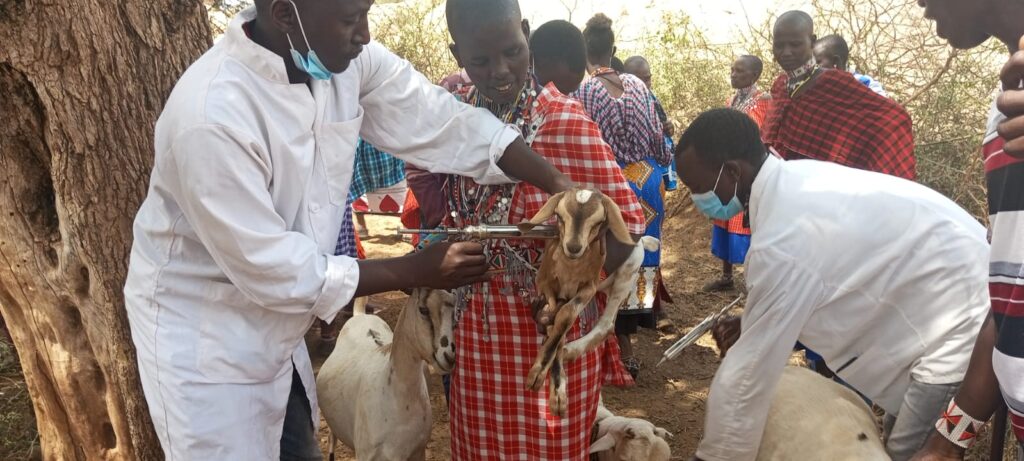
This hands-on practical not only gave LAB members experience in administering medicine, but also empowered them with confidence to treat their animals from life-threatening diseases. By learning about common threats to their herds, farmers can be better prepared to identify warning signs of disease, prevent livestock casualties, and keep their animals vital. In turn, teaching LAB groups these skills offers the chance for better profit margins when it’s time to sell in the market.
Training Highlight 3: New Business Seminar
No matter where you are in the world, starting a small business is challenging. So, to cap off these critical training, we also hosted a three-day New Business Seminar in Oloitokitok. For many participants, this was their first traveling this far from home–and sleeping in a hotel!
Alongside local business experts, our team instructed LAB groups in keeping records, managing their herds, the best times to buy and sell, and navigating market days. Two of our LAB groups are women’s groups, and most of these women never attended the livestock market before. By practicing with a mock market, they got to practice bartering, speaking up for themselves, and having confident postures. All the lessons they learned these days will be practiced as they move forward with their groups.
After these training sessions, some people are already putting their lessons into practice. One woman named Nkameroi convinced her husband to sell two bulls in order to buy another breed. Likewise, Nailepu told her husband that her business was failing because of its location, so he’s building her a small shop. This direct application of their new skills shows how eager they are to learn as much as possible about making the most out of what they have.
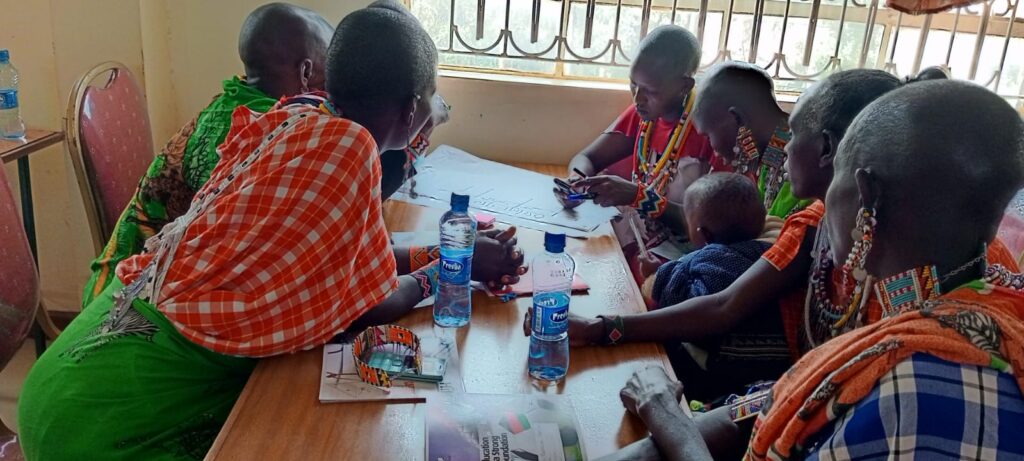
Looking Ahead: Market Day for Old and New Groups
For LAB participants, these core trainings inform their decisions in the coming years. The LAB program lasts 4 years, with the bulk of new trainings occurring in year one. After that, it’s about practicing, learning from mistakes, and working as a group to turn a strong profit.
Currently, there are six LAB groups in years 2-4 of the program. There was a seventh group, but their area was hit especially hard by the drought, so they decided to opt out of the program this next year.
After trainings, the critical portion of the LAB program are the livestock loans we give to groups. With cash in hand, we send these groups into the livestock market to buy animals when the time is right. The ideal market day–right before the seasonal rains–is approaching soon. With their new knowledge, the groups make reliable profits after this initial purchase. The money made by each group is also saved or reinvested so that groups eventually will no longer need the loans. This, in turn, promotes further community development because overall more money is in circulation.
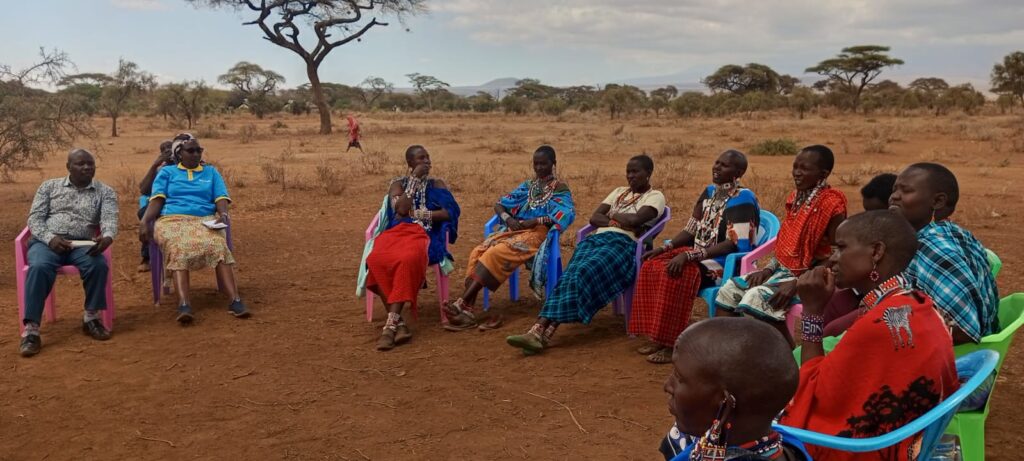
We’re excited to watch as old and new LAB groups come together on market day and put their loans to good use. Soon, they will join the over 650 LAB graduates who’ve already changed their farming practices with this model. We can’t wait to see what they can accomplish, both together and on their own.
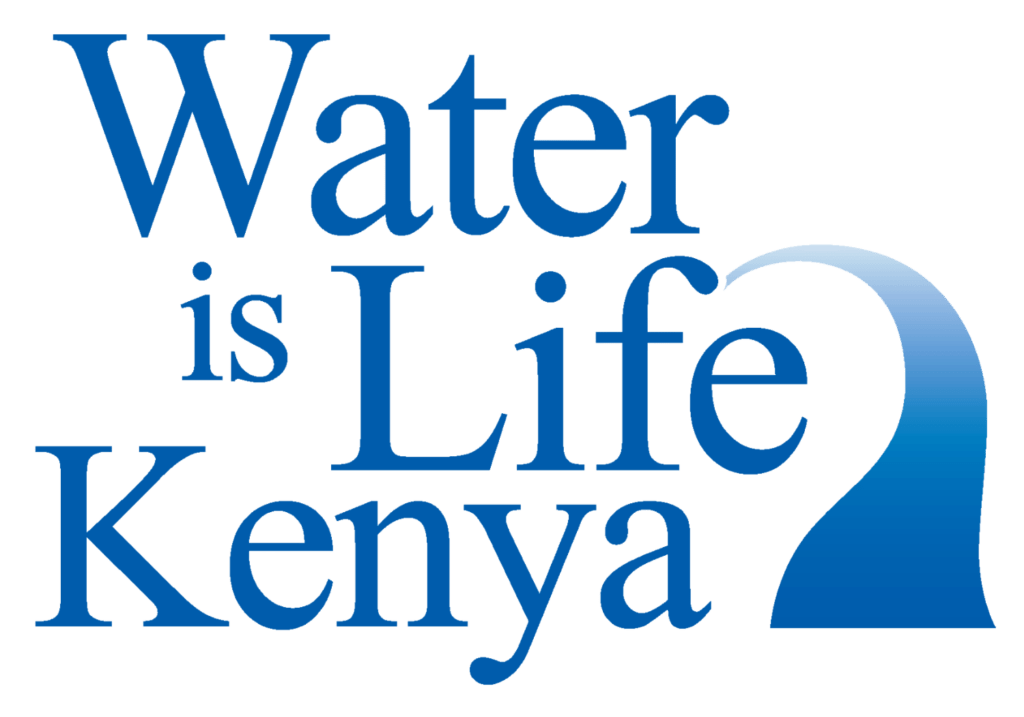
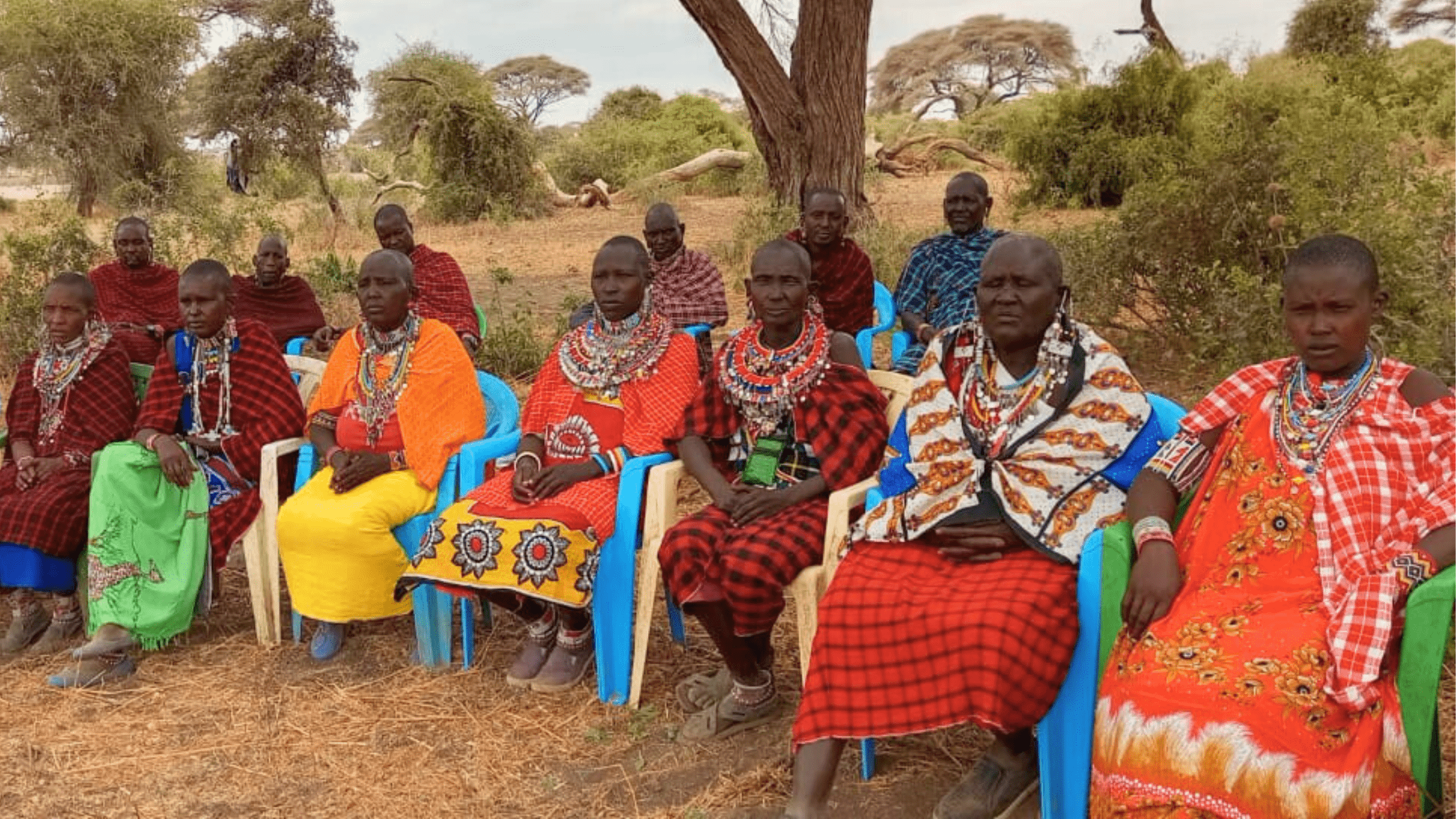
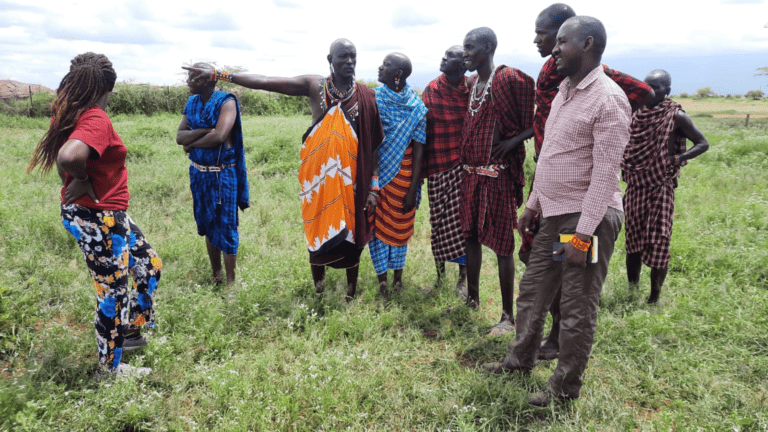
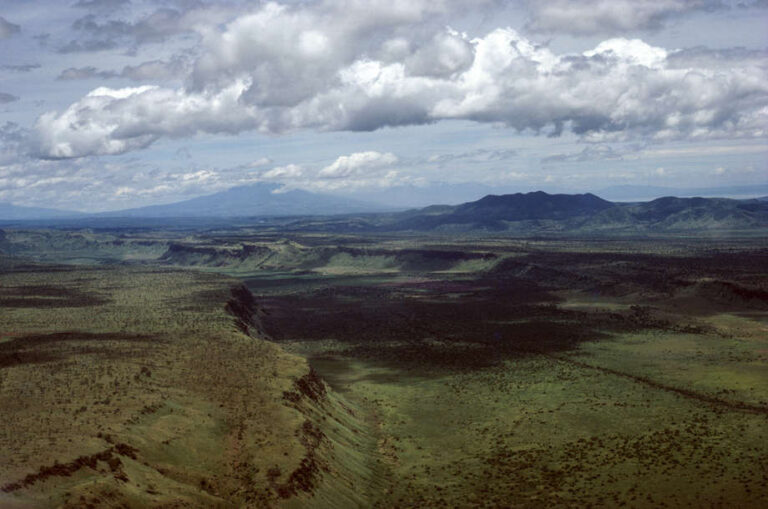
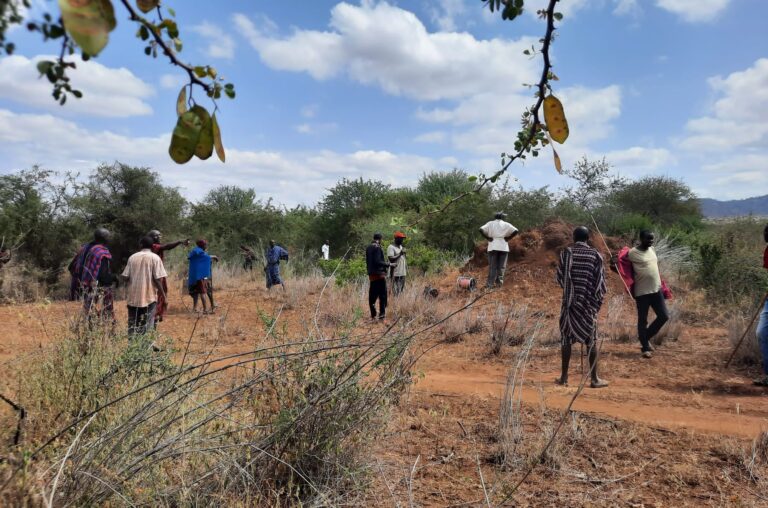

Pingback: Cows and Goats: Gifts of Hope